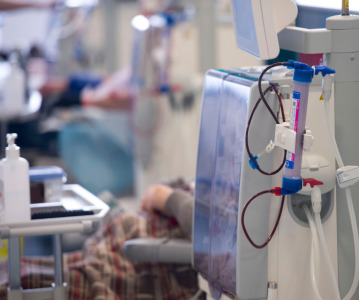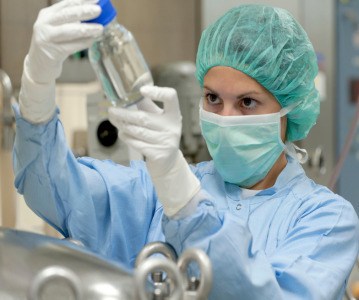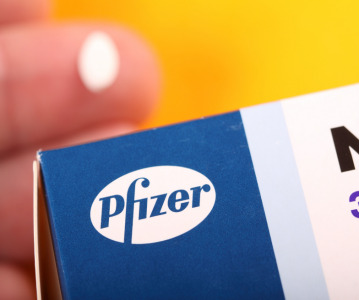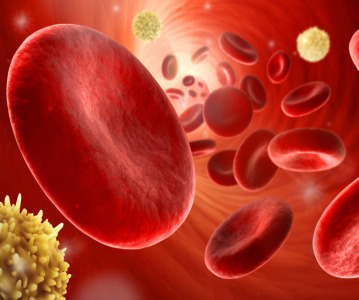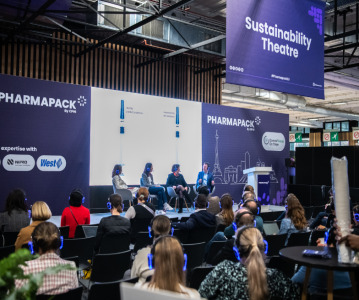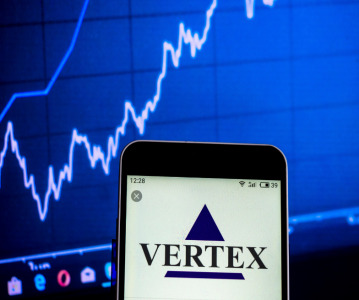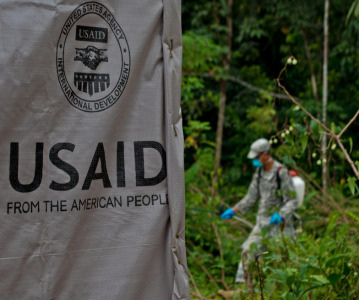A powerful new tool for the separation of charged species

Postnova's new EAF4 system.
A new analytical tool, Electrical Asymmetrical Flow Field-Flow Fractionation (EAF4) is showing much promise in biopharmaceutical and nanoparticle applications.
Traditional separation technology in these fields provides particle size or molar mass distributions as the final result. It is clear, however, that particle and molecular charge plays a primary role in many applications such as protein aggregation, polymer flocculation, particle agglomeration and in pharmaceutical formulations in general.
The new Postnova EAF2000 instrument using EAF4 technology opens a completely new way to a significantly better understanding of these phenomena by allowing the particle size or molar mass distributions to be further differentiated and transformed into charge distributions. This allows identifying charge heterogeneities, which may be present within the different size and molar mass fractions and will quickly help to aid research or establish more efficient product development processes.
The EAF2000 instrument works by combining the principle of electrical and flow field-flow fractionation (FFF) in one experiment. In flow FFF the molecules and particles are gently separated in an open channel which avoids any interaction with column packing material keeping aggregation and structures intact. The electrical field, either positive or negative, can now be applied during this separation to differentiate between differently charged species of the same size or molecular weight.
The new Postnova EAF2000 technology is also designed in such a way that it allows the determination of the electrophoretic mobility (or zeta-potential) of the separated analytes under investigation. This is a key new tool, particularly for protein research as existing techniques for zeta-potential are limited by concentration and are simple batch techniques giving just an average value for all components in the solution. The new EAF2000 can determine the zeta-potential of each individually separated component such as protein monomer and dimer (or higher aggregates) or antibody monomer and fragments/aggregates.
Early successes with the technology have been found in applications as diverse as the separation of a positively charged pharmaceutical protein formulation, determination of the difference in zeta-potential of protein monomer and dimer and the differentiation of charge on polymer latex particles.
There is the first chance to see this technology in action on 6 March at the 2nd Postnova FFF Seminar at the company's UK headquarters in Malvern (UK). Following the popularity of the first Postnova first seminar, an informative program of talks from eminent guest speakers, plus presentations from Postnova scientists has been assembled.
The free 2018 seminar has been designed to advance the attendees knowledge of applications and techniques in nanoscale characterisation. The seminar will be particularly useful to those interested in using FFF, Size Exclusion Chromatography (SEC/GPC) and Light Scattering/Viscometry (MALS/DLS), as well as those interested in how these techniques may be useful in their research.
With limited attendee spaces available please register now for this free Seminar by contacting Postnova Analytics at info.uk@postnova.com.
Related News
-
News US FDA adds haemodialysis bloodlines to devices shortage list
On March 14, 2025, the US FDA published an open letter to healthcare providers citing continuing supply disruptions of haemodialysis bloodlines, an essential component of dialysis machines. -
News Women in Pharma: Manufacturing personal and team success
Our monthly Women in Pharma series highlights the influential lives and works of impactful women working across the pharmaceutical industry, and how the industry can work towards making the healthcare industry and workplace more equitable and inclusive... -
News Pfizer may shift production back to US under Trump pharma tariffs
At the 45th TD Cowen annual healthcare conference in Boston, USA, Pfizer CEO Albert Bourla outlined the potential for Pfizer to shift its overseas drug manufacturing back to the US as pharmaceutical industry players weigh their options against Presiden... -
News Experimental drug for managing aortic valve stenosis shows promise
The new small molecule drug ataciguat is garnering attention for its potential to manage aortic valve stenosis, which may prevent the need for surgery and significantly improve patient experience. -
News Women in Pharma: Connecting accessible pharma packaging to patients – a Pharmapack Special
Throughout our Women in Pharma series, we aim to highlight how CPHI events encourage discussions around diversity, equity, and inclusion initiatives in the pharmaceutical industry. -
News Vertex Pharmaceuticals stock jumps as FDA approves non-opioid painkiller
UK-based Vertex Pharmaceuticals saw their stock shares soar as the US FDA signed off on the non-opioid painkiller Journavx, also known as suzetrigine, for patients with moderate to severe acute pain, caused by surgery, accidents, or injuries. -
News Trump administration halts global supply of HIV, malaria, tuberculosis drugs
In various memos circulated to the United States Agency for International Development (USAID), the Trump administration has demanded contractors and partners to immediately stop work in supplying lifesaving drugs for HIV, malaria, and tuberculosis to c... -
News 2024 Drug Approvals: a lexicon of notable drugs and clinical trials
50 drugs received FDA approval in 2024. The centre for biologics evaluation and research also identified six new Orphan drug approvals as under Biologics License Applications (BLAs). The following list picks out key approvals from the list, and highlig...
Recently Visited
Position your company at the heart of the global Pharma industry with a CPHI Online membership
-
Your products and solutions visible to thousands of visitors within the largest Pharma marketplace
-
Generate high-quality, engaged leads for your business, all year round
-
Promote your business as the industry’s thought-leader by hosting your reports, brochures and videos within your profile
-
Your company’s profile boosted at all participating CPHI events
-
An easy-to-use platform with a detailed dashboard showing your leads and performance
